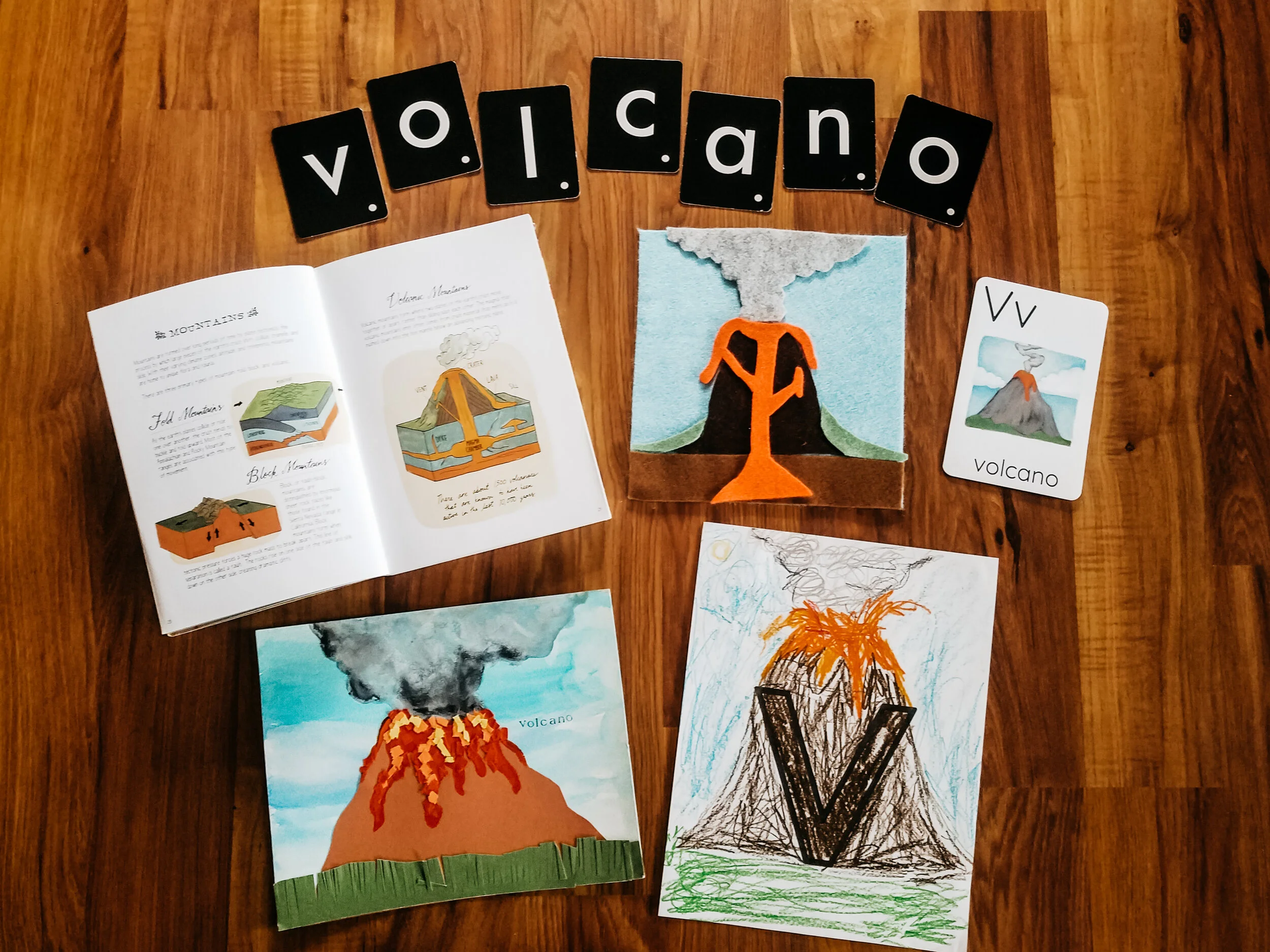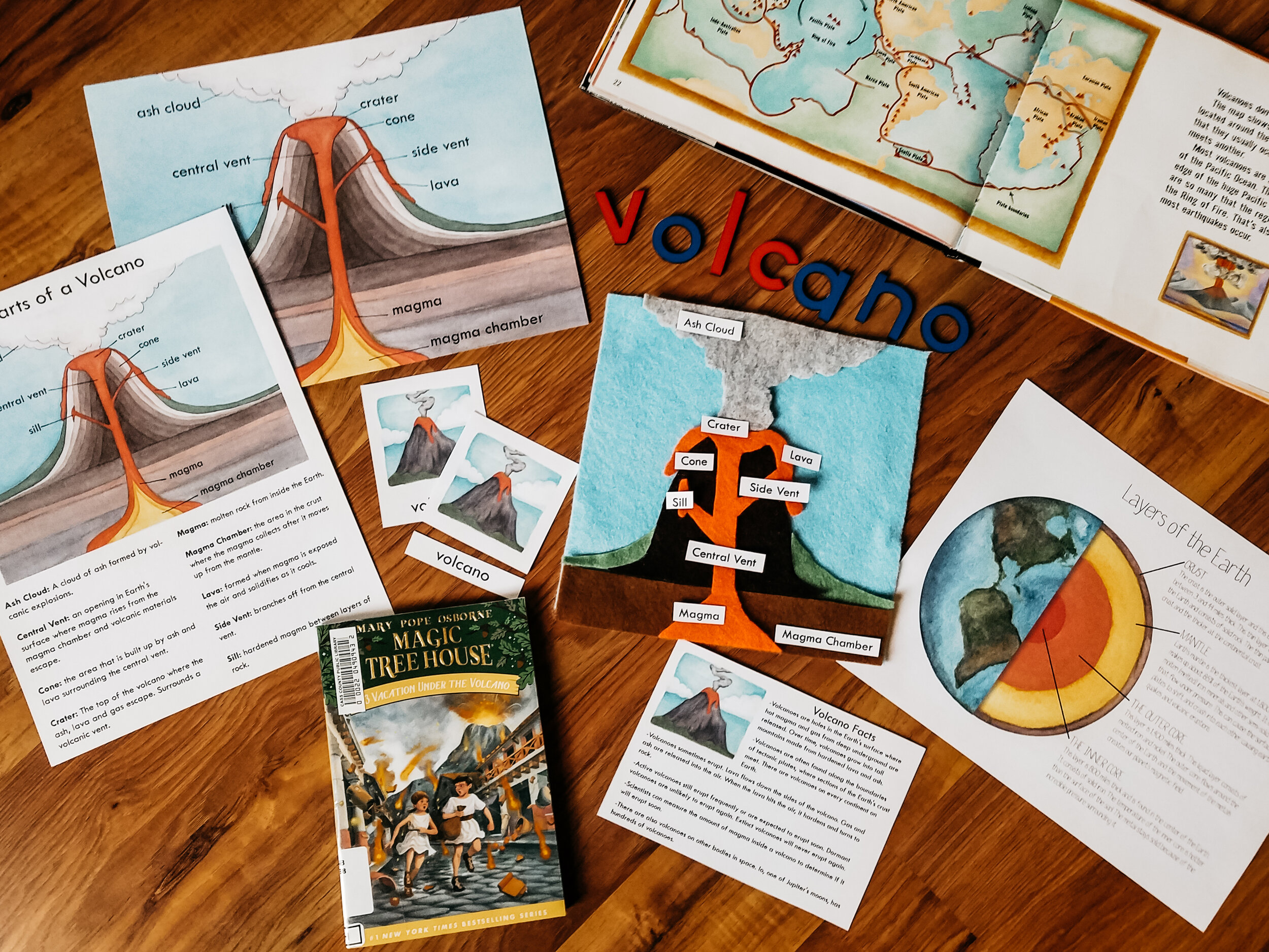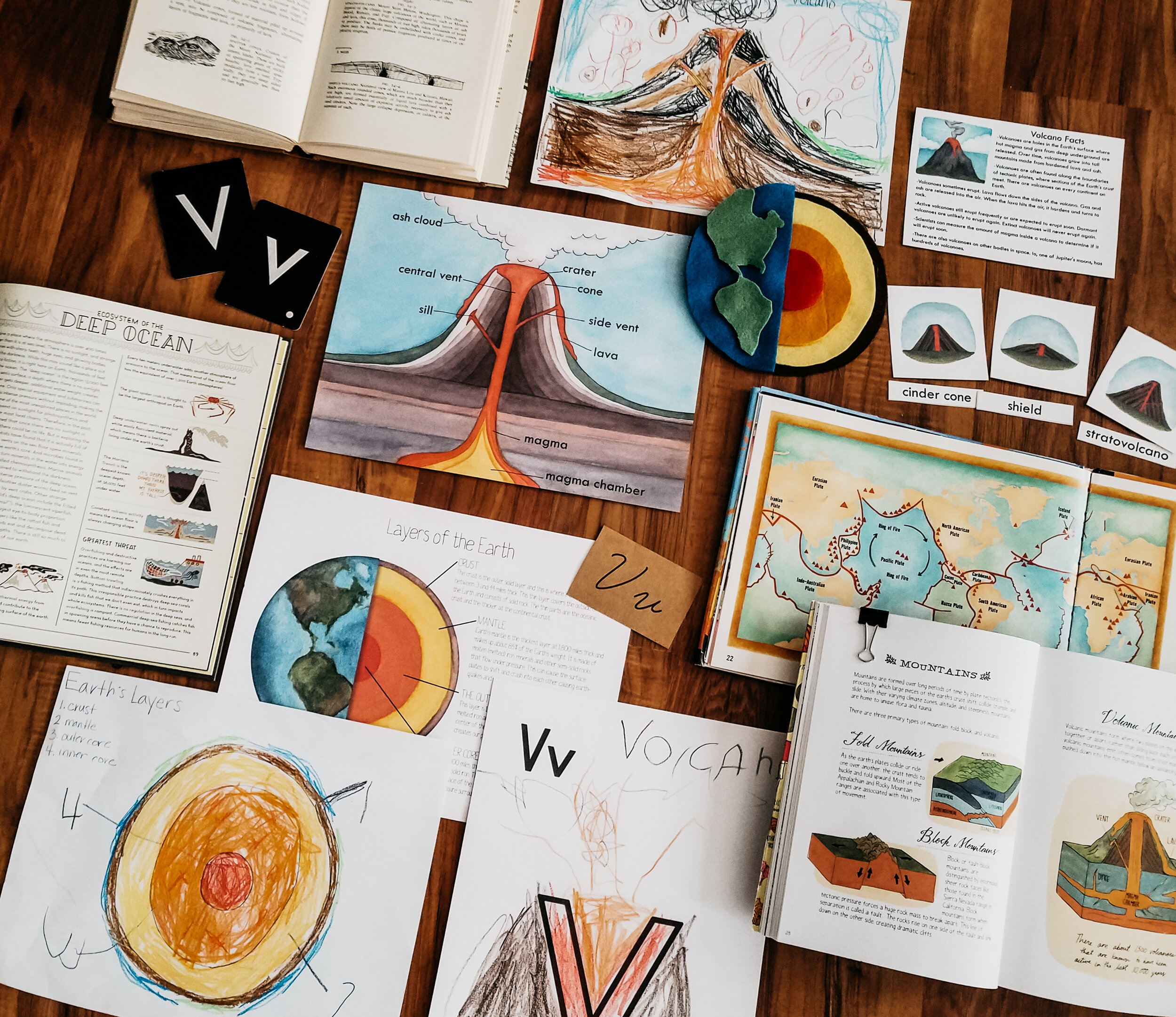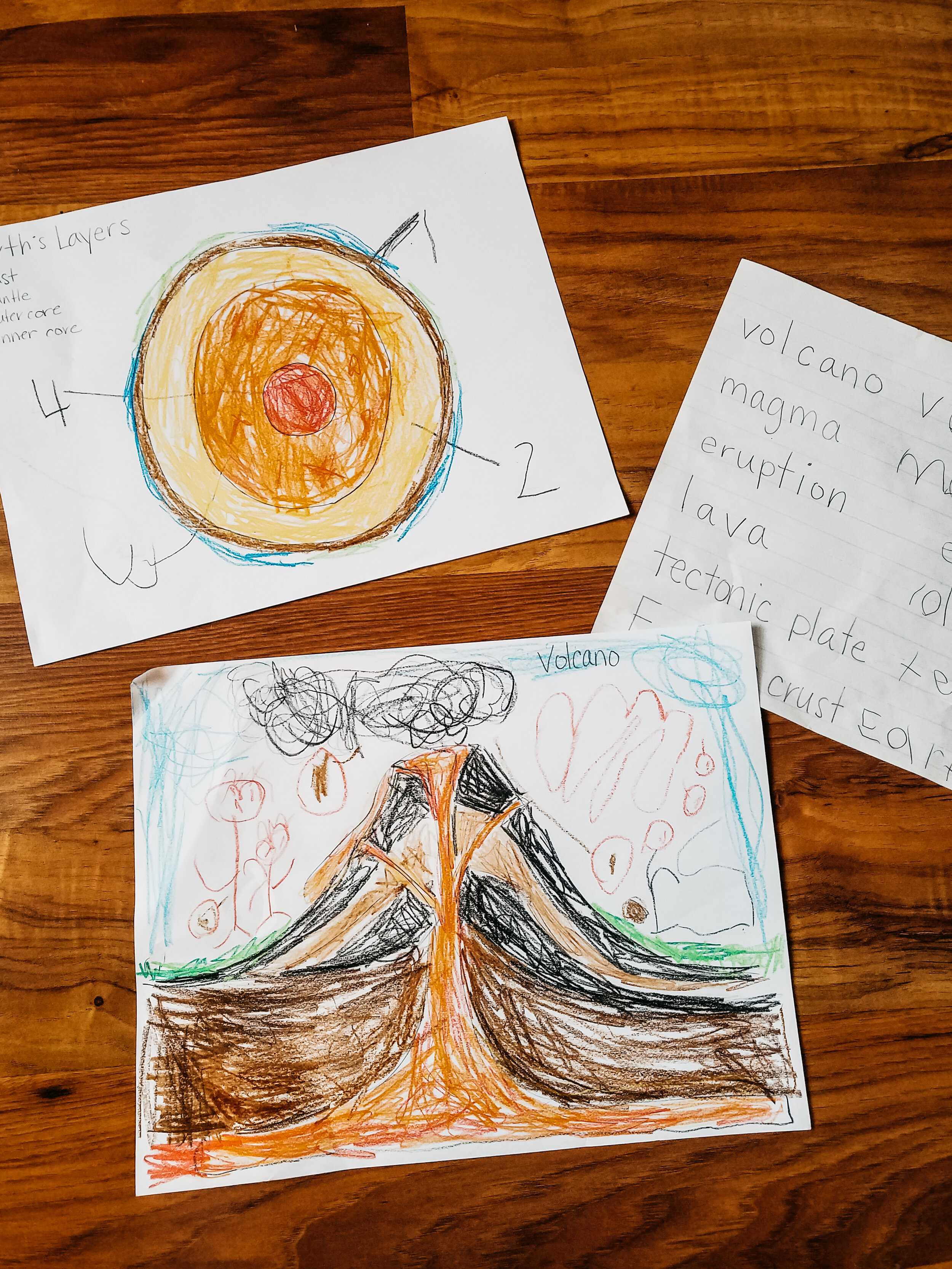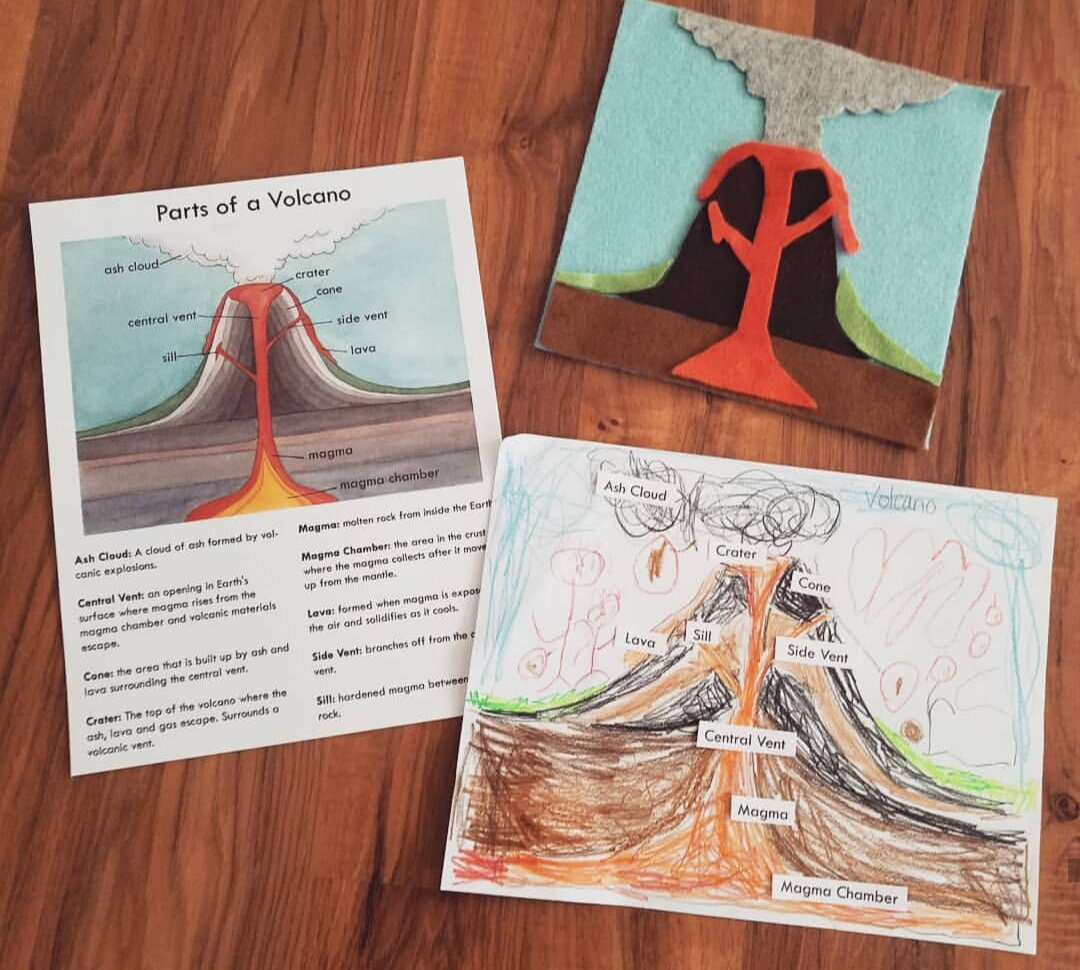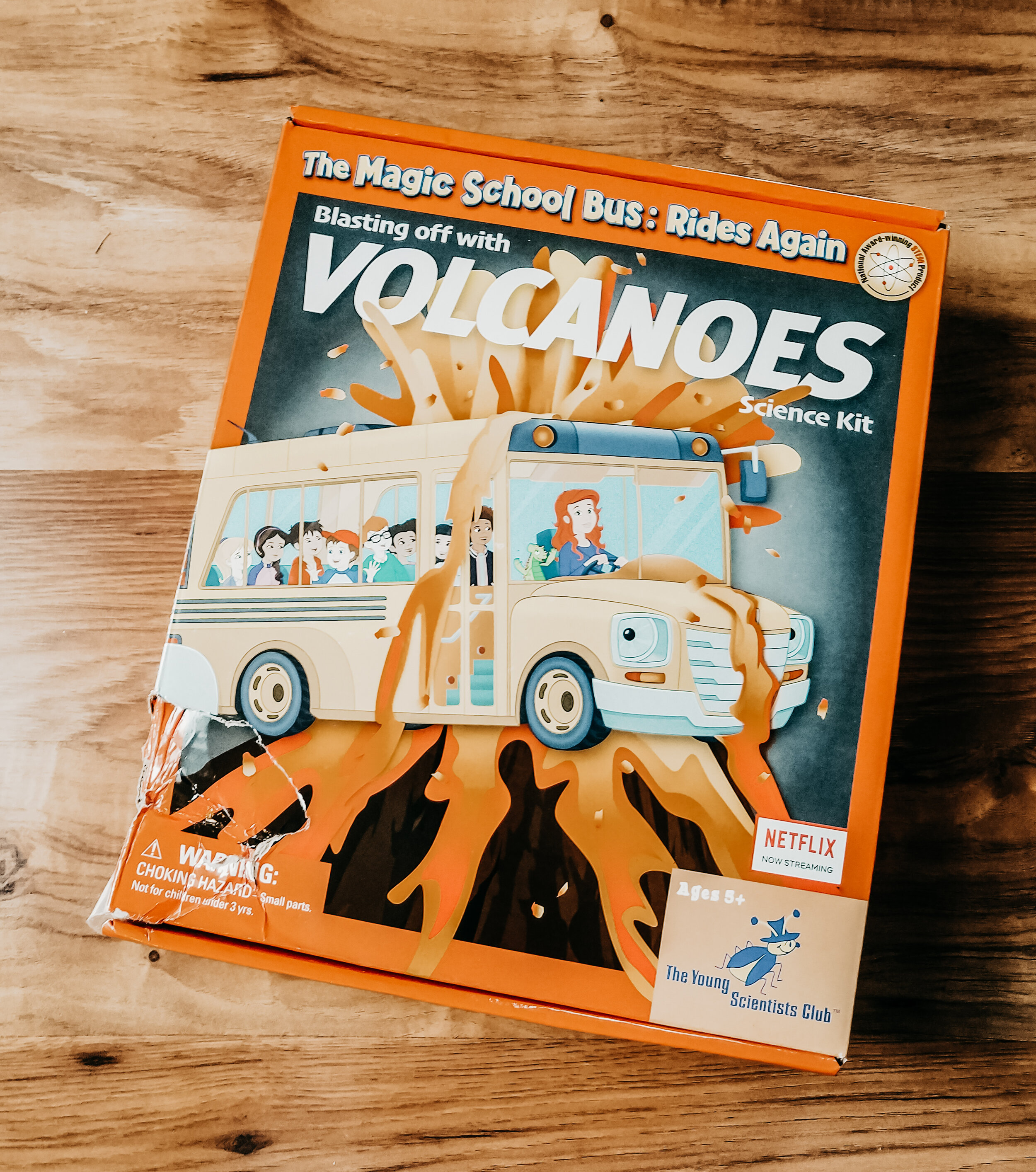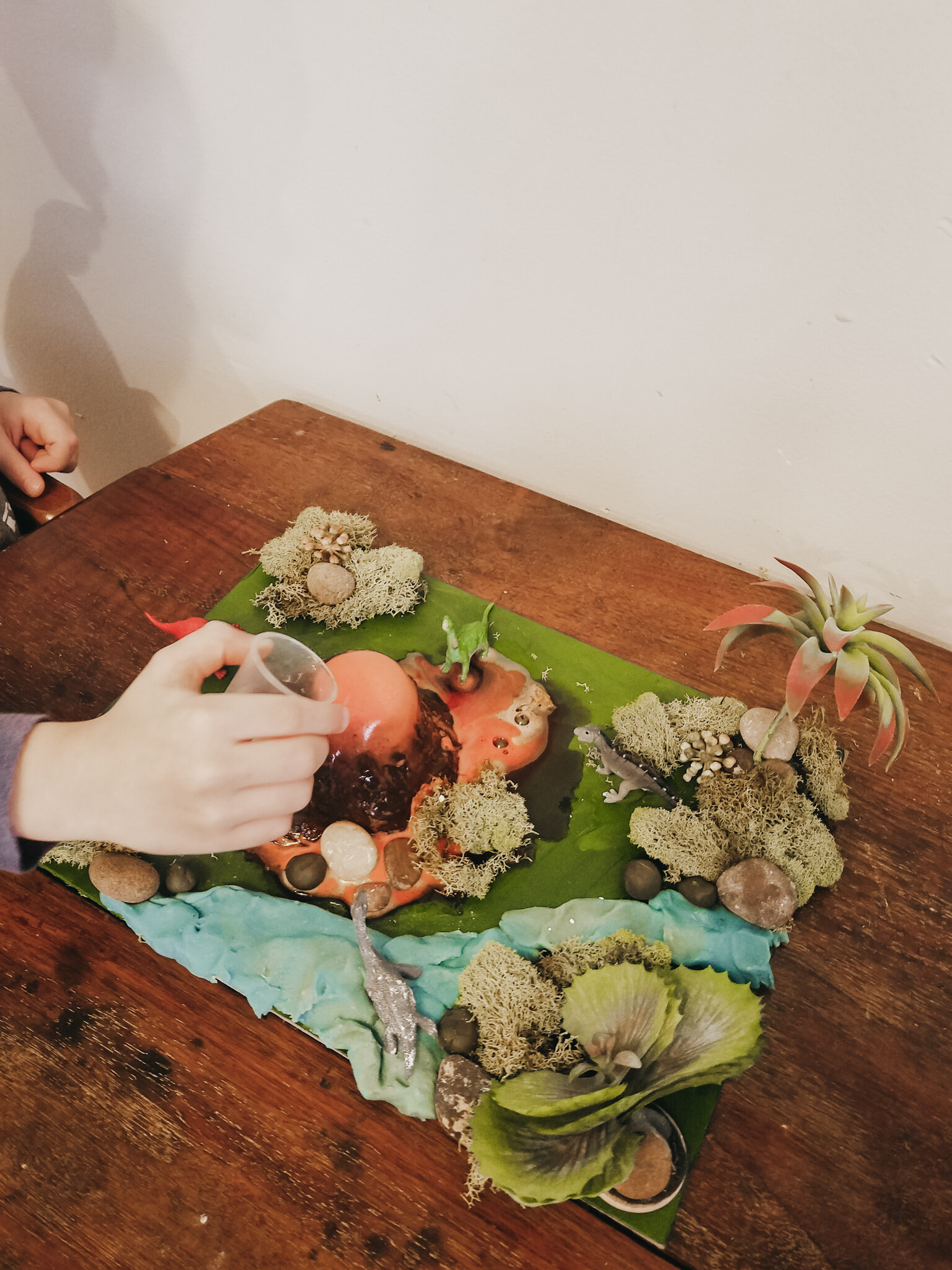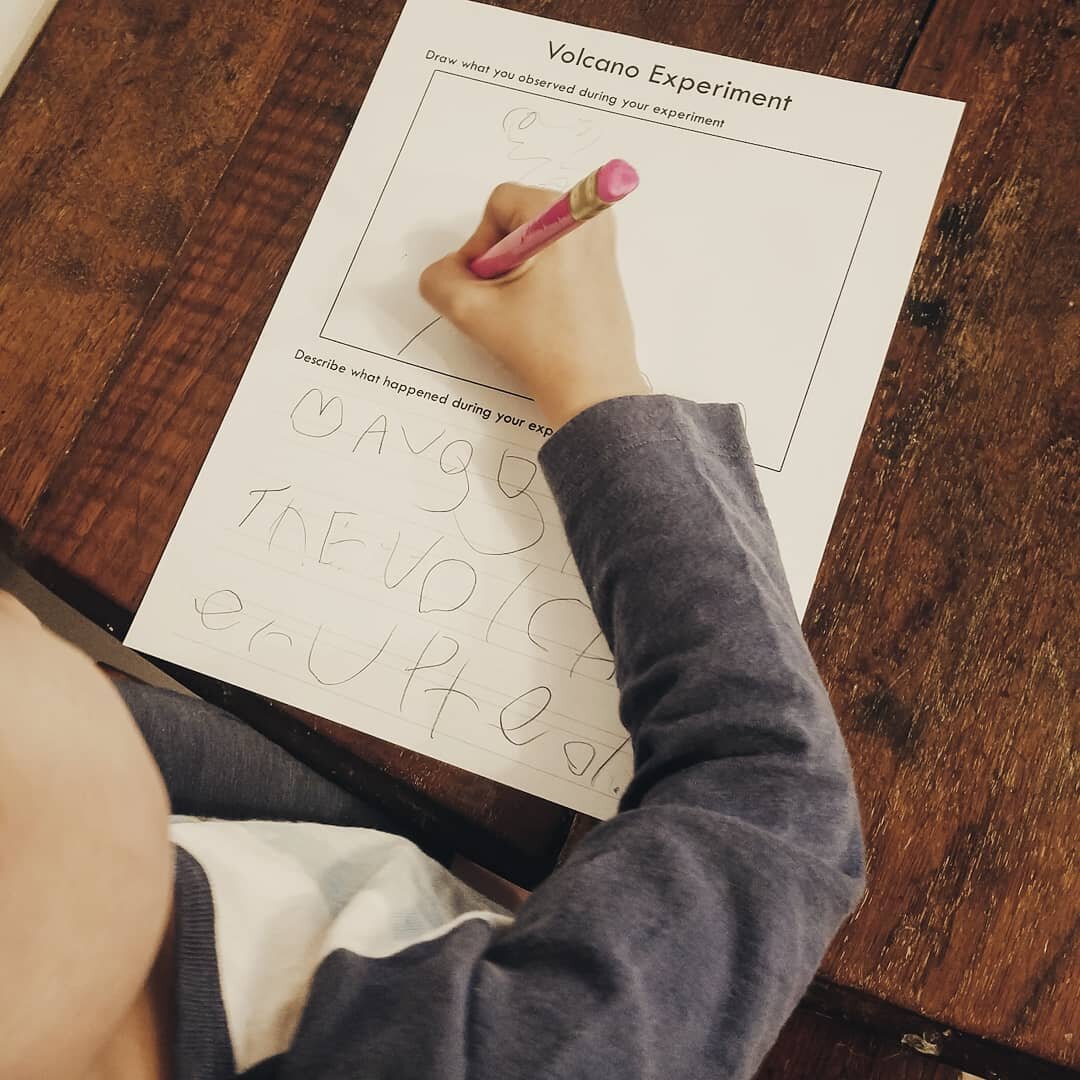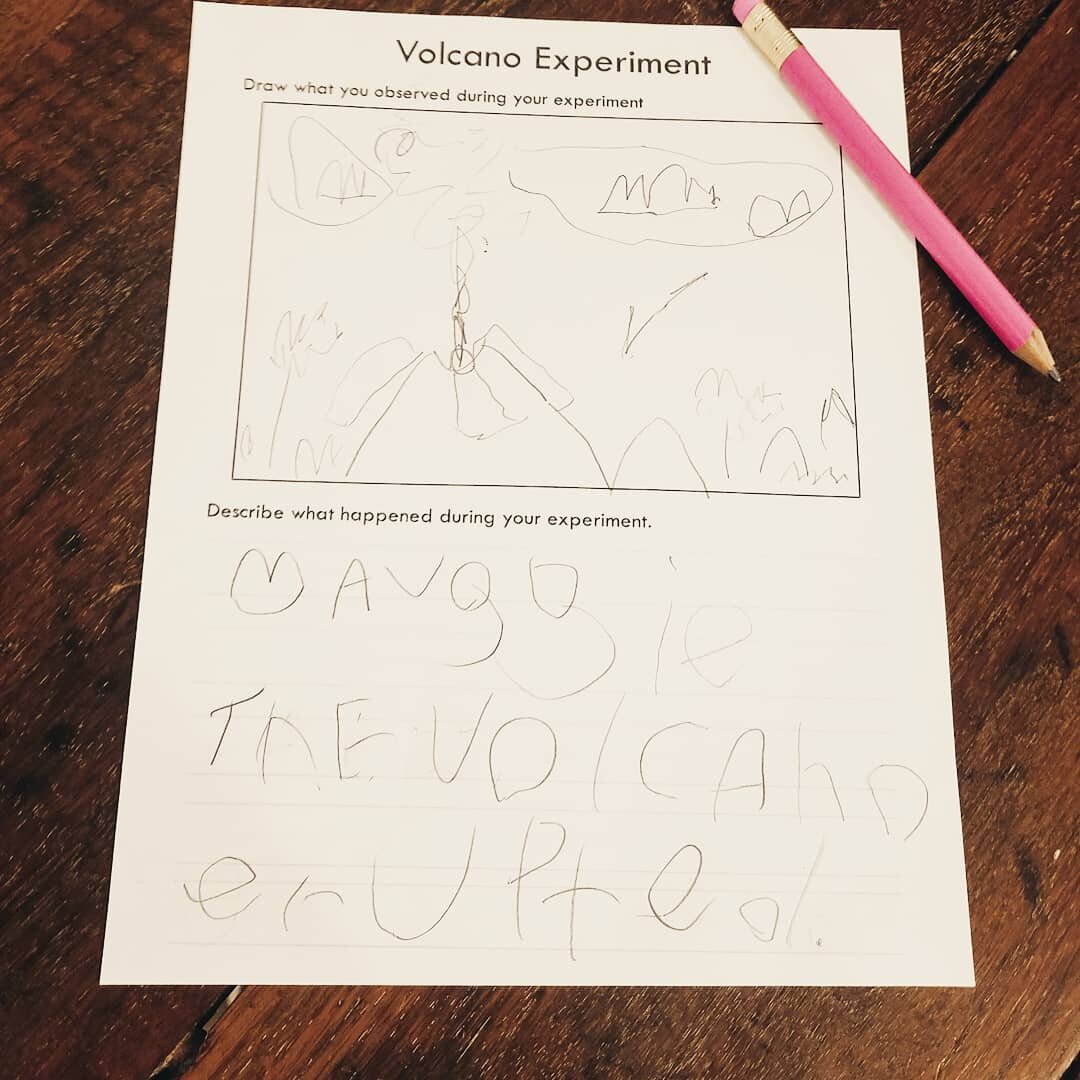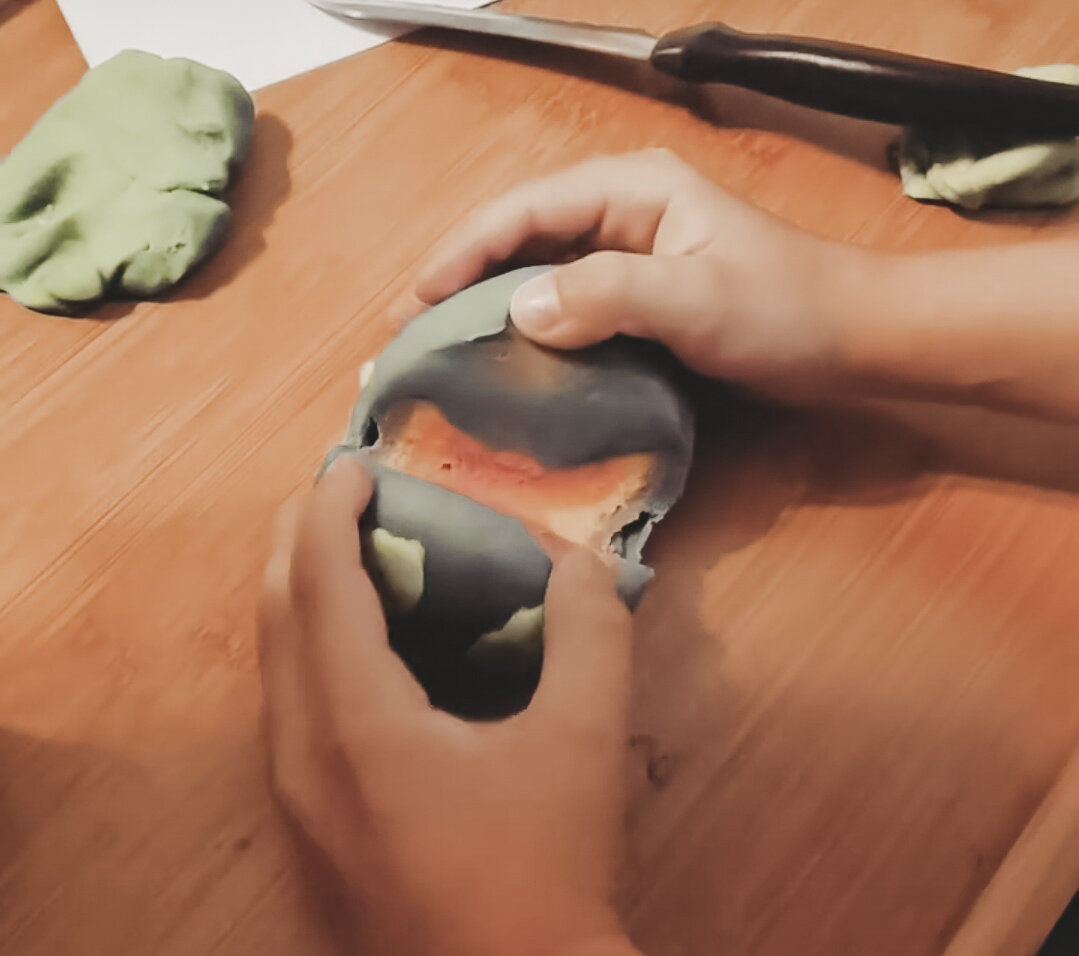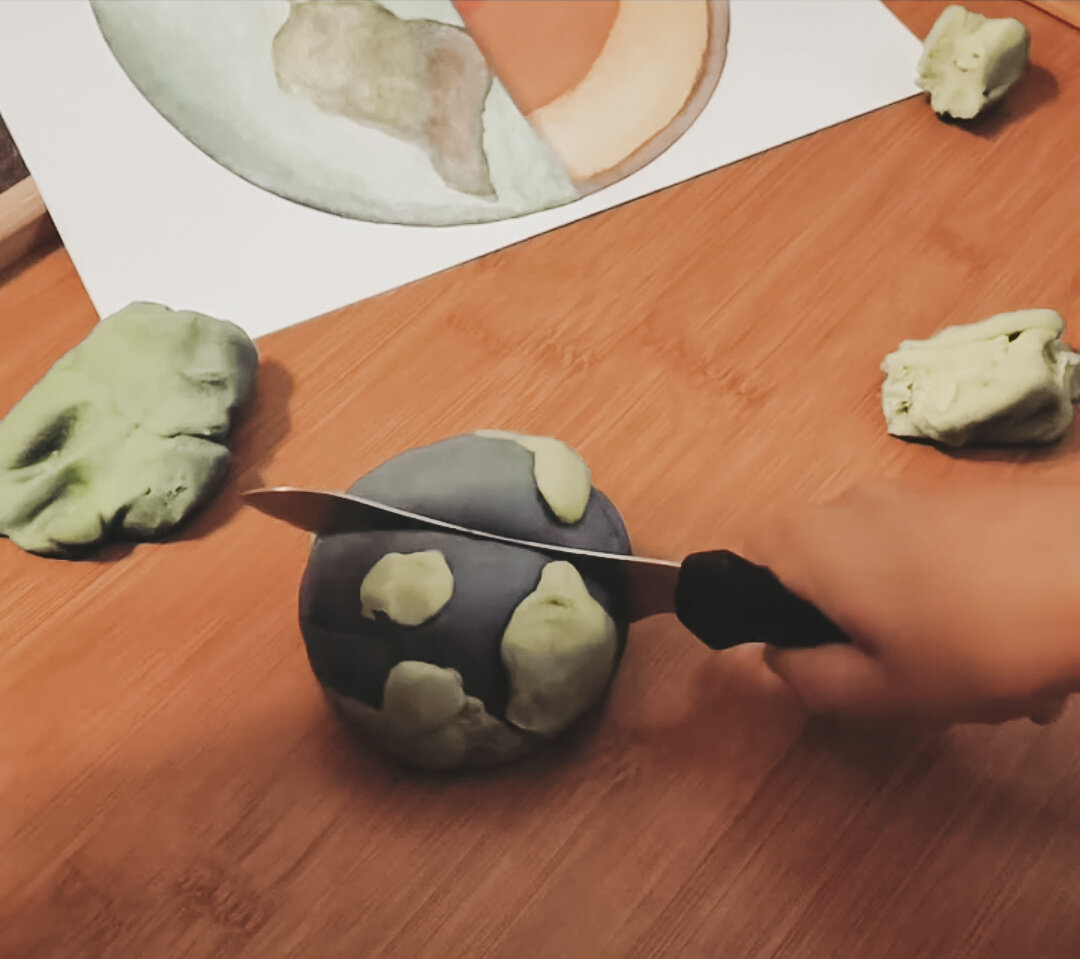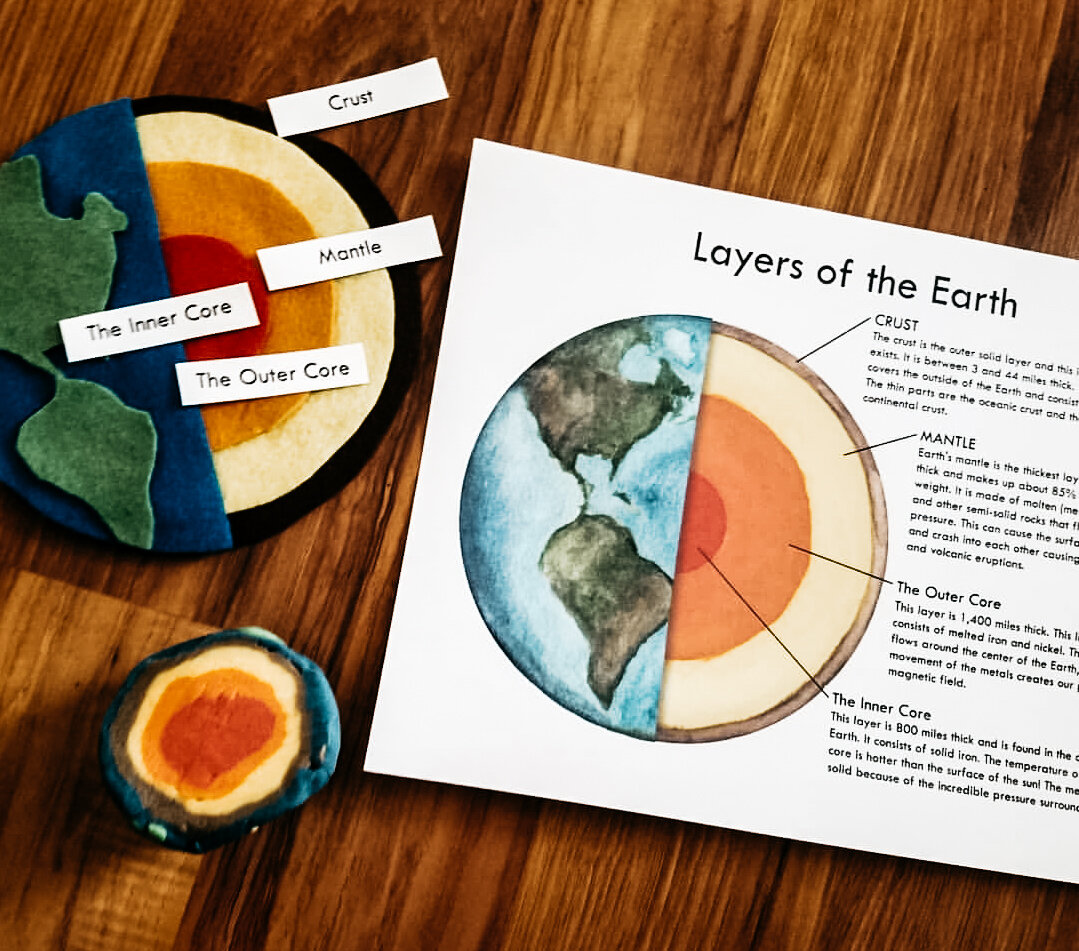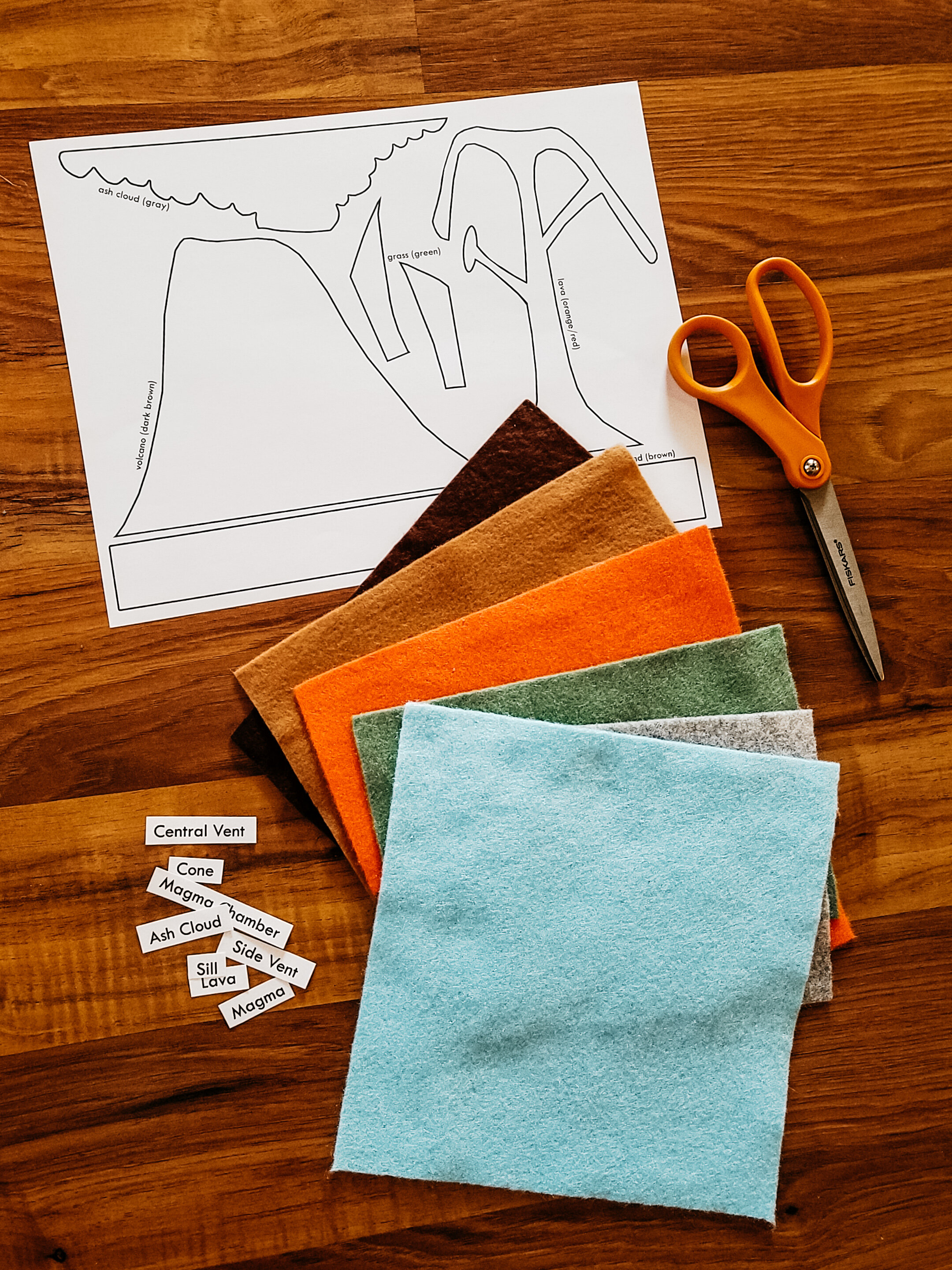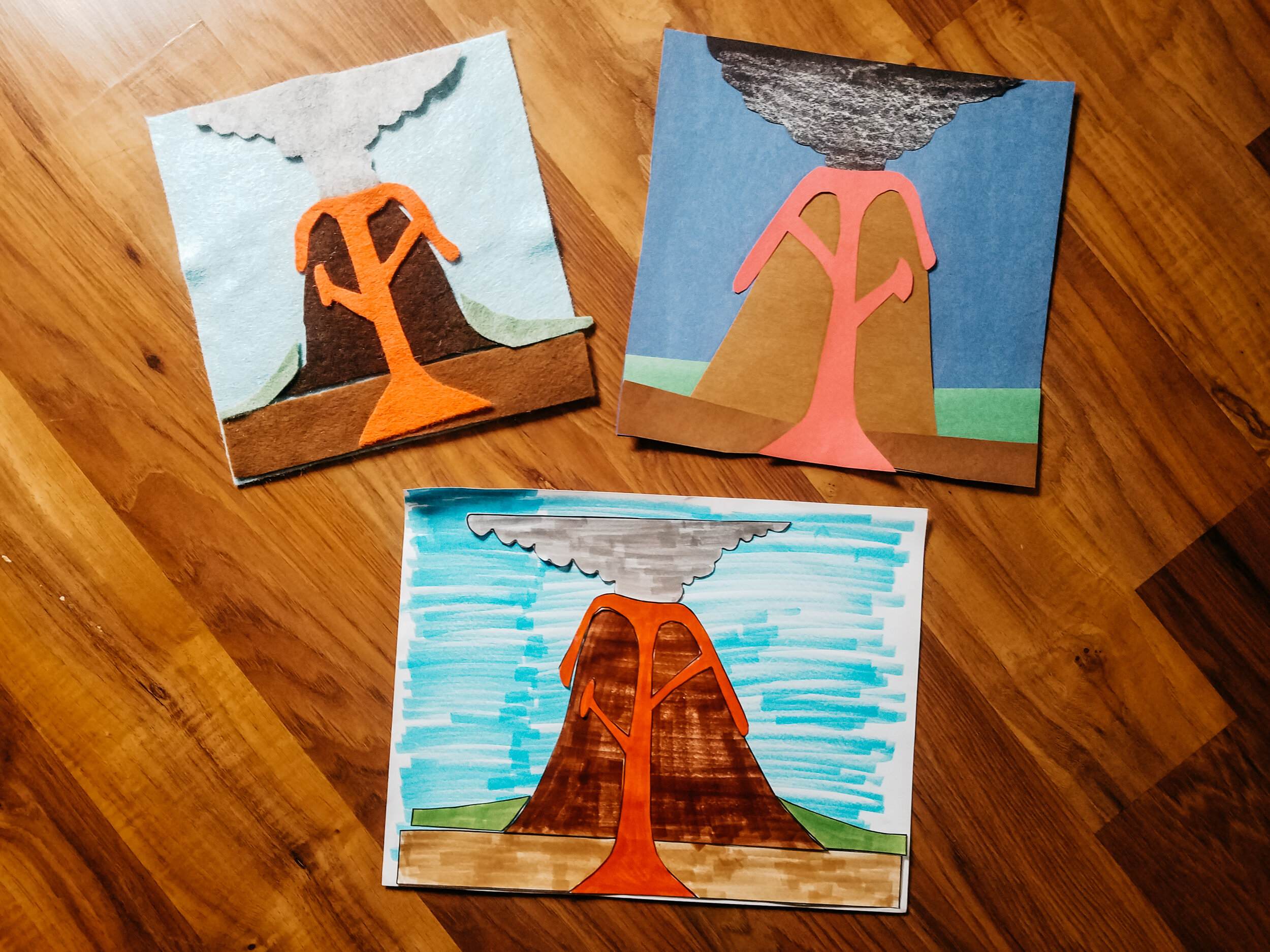Free Volcano Unit Study
The goal of a unit study is to immerse your children in a subject so they can gain a comprehensive knowledge on the topic. Here we will incorporate several subjects and explore volcanoes from multiple perspectives.
Volcanoes are a favorite subject at our house. In fact, we revisit the topic several times a year!
Be sure to download my Free Volcano Resources to accompany your study. You can purchase the full Volcano Unit Study Bundle if you feel you want to dive a little deeper.
Lets start with helpful resources! Please note that this post includes affiliate links. I only recommend products that I have personally used and believe will be of use to you. Thanks for your support!
Remember to check your library to see which digital resources they offer. We enjoy Ebooks, audiobooks and video streaming from sites like Overdrive, Hoopla and Kanopy through our library-all totally free!
Another low cost option for ebooks and audiobooks is Scribd. For $8.99 per month, you’ll get access to their library of Ebooks, audiobooks, magazines, news, sheet music, articles, documents, and more! Use my link for a 60 day free trial.
Books
Resources
Crayola Air-Dry Clay (for crafting your own DIY volcano)
Science
Most of the activities for this study will fall under the category of Science. Refer to your volcano books, websites, and documentaries and consider these topics:
Parts of a Volcano: Identify the features of a volcano.
Layers of the Earth: Identify the layers of Earth as it relates to volcanoes.
Volcanic formation: Discuss the different ways volcanoes form.
Tectonic Plates: What are tectonic plates? What role do they play in volcanic formation?
Types of Volcanoes: What are the different types of volcanoes? See if you can identify what type of volcanoes
Forecasting Volcanic Eruptions: Learn about how scientists predict when a volcano is most likely to erupt.
Volcano Eruption Experiment: There are so many different ways to build a volcano! You can use play dough, air dry clay, paper mache or plaster. We enjoyed building a simple volcano out of air dry clay but also bought a kit which was really fun because it can be stored away and used over and over again. We tried a few different recipes but my little guys were happy with the simple baking soda and vinegar combination.
Be sure to take some time to discuss or write down your observations with your students and write about your findings in the Volcano Experiment Log.
Earth's Layers Play Dough Activity:
Illustrate Earth's layers by layering different colors of play dough in a sphere to represent Earth's inner core (red), outer core (orange), mantle (yellow), crust (brown), and Earth's surface (blue and green).
Once you've created the play play dough Earth, cut into the ball with a knife to reveal a cross section of Earth's layers.
Here's the homemade play dough recipe we use:
4 cups flour
¼ cup vegetable oil
1 cup salt
3 tbs cream of tartar
3-3 ½ cups of boiling water
food coloring
Mix all the ingredients together in a Kitchen Aid mixer with the dough hook and slowly add the 3-3 ½ cups of boiling water. Add a little water if the consistency is too dry or flour if it's too wet.
Once you achieve the desired consistency, separate the dough into six portions. Add the food coloring. You may have to knead by hand to distribute the food coloring evenly.
Store in a zip lock baggie or air tight container for up to 6 months.
Parts of a Volcano Felt Puzzle Pattern
I've created a pattern for you to cut your own felt puzzle! Simply cut the pattern pieces, pin or trace the shapes on the felt and cut. You can also use construction paper or have your student color the directly on the pattern pieces to create their own puzzle. They can glue the pieces on a background piece of paper to create an artwork keepsake.
Social Studies
Geography: Look at a map of all the volcanoes in the world. Is there a volcano close to where you live?
Volcanic Eruptions in History: Of all the volcanic eruptions in history, the most fascinating might be that of Mount Vesuvius. The volcano erupted in 79 AD, killing thousands of people and buried the southern Italian towns of Pompeii and Herculaneum, preserving them for centuries. Discover what archaeologists were able to uncover about the everyday life of this ancient civilization.
We enjoyed several read aloud books on the topic: What Was Pompeii?, I Survived the Destruction of Pompeii, AD 79, and Vacation Under The Volcano.
Impact on Society: Discuss the affects volcanic eruptions have had on society and/or culture throughout history.
Volcanic Eruptions in Modern History: Research some of the more recent volcanic eruptions. What major volcanic eruptions have happened in your lifetime? Are there any happening right now? The eruption of Mount St. Helens is an example of a volcanic event in the United States in recent history. I Survived the Eruption of Mount St. Helens, 1980 is another favorite read aloud of ours.
Language Arts/Reading
Poetry: Read the poem “A still — Volcano — Life” by Emily Dickinson. Encourage your children to share any feelings they might have about the poem. The focus for younger children is more on the enjoyment of poetry, not to analyze it. Older students can recite it themselves, memorize it, and break it down if they wish.
Writing Practice: I've provided vocabulary words tracing worksheet for your child for copy work. Older students can write the words on their own. More advanced students can put what they've learned about volcanoes into their own words and write a report on volcanoes.
Read Aloud: It's always a special treat to enjoy a fiction chapter book as a family. We read I Survived the Eruption of Mount St. Helens, 1980, I Survived the Destruction of Pompeii, AD 79, and Vacation Under The Volcano.
V is for Volcano Block Letters: Offer these block letter pages to your students for a hands-on way to learn the alphabet! We use these all the time in our homeschool classroom. I suggest giving them to your student to simply color however they’d like or you can provide them for materials to fill in the letters. We’ve used ink stamps, counters, small toy figurines, stickers. So many possibilities. You can also laminate them to use over and over again as play dough mats. My son's favorite is to turn the V into a volcano.
Arts and Crafts
Art Study: Children are never too young to start appreciating art!
Enjoy these pieces of artwork with your children:
An Eruption of Mount Vesuvius, by Joseph Wright
Mount Vesuvius in Eruption by J.M.W. Turner
The Volcano by Arnold Böcklin
Eruption of volcano by Nikolai Yaroshenko
Ask your children to point out what they enjoy about each painting or how it makes them feel. Encourage your students to copy their favorite painting using a medium of their choice.
Volcano Artwork: Volcanoes happen to be my son's favorite subject for his artwork. He's colored, painted and paper crafted many volcanoes! He was totally inspired on his own to create this artwork, I just offered the materials. Sometimes I did my own artwork along side him, encouraging him to make note of the parts of the volcano or asked him to make a particular volcano shape. I usually encourage him to write out some volcano vocabulary words or label parts of his volcano.
Documentaries
Good documentaries are full of powerful visuals and offer a closer look at volcanoes. I think of them as visual lessons that add to our learning experience.
I will say, some children get a bit anxious when watching natural disasters so be sure to double check the maturity rating or watch with parental guidance.
YouTube:
Netflix:
Magic School Bus S2/E1 “The Magic School Bus Blows it's Top”
Into the Inferno
Nova: Killer Volcanoes (also available on PBS)
Amazon Prime:
NOVA: Volatile Earth - Volcano on Fire
Other:
Volcano: Nature's Inferno by National Geographic
Ring of Fire (IMAX)
NOVA: Kīlauea: Hawai’i on Fire
